Classroom Special
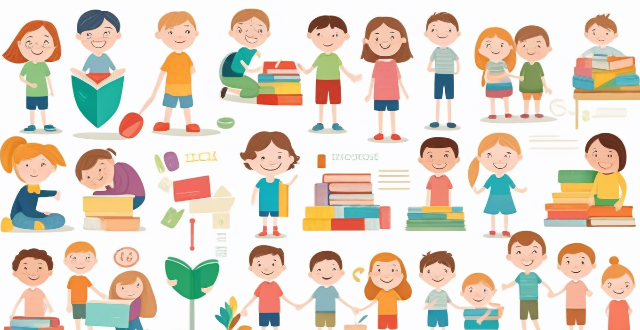
How do you create an inclusive classroom environment for students with diverse special education needs ?
Creating an inclusive classroom for students with diverse special education needs is essential. Strategies include differentiated instruction, Universal Design for Learning (UDL), collaborative learning, positive classroom culture, and professional development. These approaches ensure equal opportunities for all students to learn and thrive.

What strategies can teachers use to accommodate students with special education needs in the classroom ?
Strategies for Accommodating Students with Special Education Needs in the Classroom As an educator, it is essential to create an inclusive learning environment that meets the needs of all students, including those with special education needs. In this article, we will explore some effective strategies that teachers can use to accommodate students with special education needs in the classroom. 1\. Differentiated Instruction Differentiated instruction is a teaching approach that tailors instruction to meet individual student needs. This strategy involves modifying curriculum, instruction, and assessment to address diverse learning styles, abilities, and interests. Here are some ways to implement differentiated instruction: * **Varying the complexity of tasks**: Assign tasks of varying difficulty levels based on students' abilities and progress. * **Providing multiple means of representation**: Use visual aids, manipulatives, or technology to help students understand complex concepts. * **Offering choices in assignments**: Allow students to choose from different assignments or projects that align with their interests and strengths. 2\. Collaborative Learning Collaborative learning encourages students to work together to achieve common goals. This approach can benefit students with special education needs by providing opportunities for social interaction and peer support. Some collaborative learning strategies include: * **Group work**: Assign students to groups based on their skills and interests, ensuring each member has a role to play. * **Partner reading**: Have students read aloud with a partner, taking turns summarizing what they have read. * **Peer tutoring**: Match students with stronger academic skills with those who need additional support, allowing them to learn from each other. 3\. Assistive Technology Assistive technology refers to tools and devices designed to help individuals with disabilities perform tasks more easily. Incorporating assistive technology into the classroom can greatly benefit students with special education needs. Some examples of assistive technology include: * **Speech recognition software**: Helps students with physical limitations or dyslexia to dictate their thoughts and ideas. * **Audiobooks**: Provides auditory input for students who struggle with reading comprehension. * **Graphic organizers**: Visual tools that help students organize information and ideas, particularly useful for students with learning disabilities or ADHD. 4\. Clear and Consistent Routines Establishing clear and consistent routines can help reduce anxiety and increase predictability for students with special education needs. Some ways to implement routines include: * **Schedule boards**: Display daily schedules visually to help students understand what to expect throughout the day. * **Transitional cues**: Use verbal or visual cues to signal when it's time to switch activities or move to a different location. * **Predictable lesson structures**: Follow a consistent format for lessons, such as starting with a warm-up activity, followed by direct instruction, independent practice, and wrap-up discussions. 5\. Positive Behavioral Interventions and Supports (PBIS) PBIS is a framework designed to create positive school cultures by promoting appropriate behavior and supporting students in need of behavioral interventions. Some PBIS strategies include: * **Reinforcement systems**: Reward positive behaviors with tangible incentives or praise. * **Social skills training**: Teach students how to interact appropriately with peers and adults through role-playing and modeling. * **Behavior contracts**: Work with individual students to develop agreements outlining expected behaviors and consequences. 6\. Parental Involvement and Communication Maintaining open communication with parents is crucial for supporting students with special education needs. Some ways to involve parents include: * **Regular conferences**: Schedule meetings with parents to discuss their child's progress and address any concerns. * **Homework hotlines**: Provide a phone number or email address where parents can reach out for assistance with homework assignments. * **Family engagement activities**: Plan events that allow families to participate in school activities, fostering partnerships between home and school.
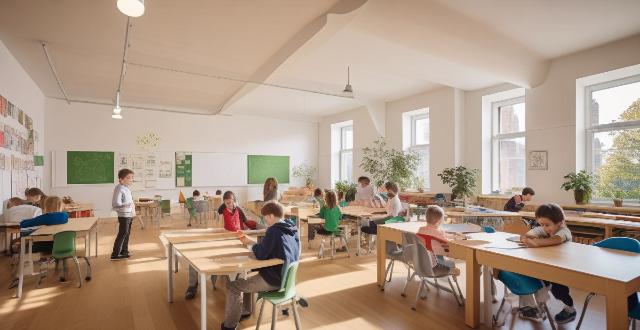
What are the benefits of using flipped classroom models as an innovative teaching strategy ?
The flipped classroom model is an innovative teaching strategy that reverses the traditional learning environment by delivering instructional content outside the classroom and using class time for interactive learning activities. This approach offers several benefits, including enhanced student engagement, improved student performance, optimized classroom time, increased teacher efficiency, promotion of lifelong learning skills, cultivation of a collaborative environment, support for differentiated instruction, encouragement of parental involvement, and flexibility for teacher innovation. Overall, the flipped classroom model empowers both students and teachers to make the most out of their educational experience by leveraging technology, fostering engagement, and promoting a culture of collaboration and lifelong learning.
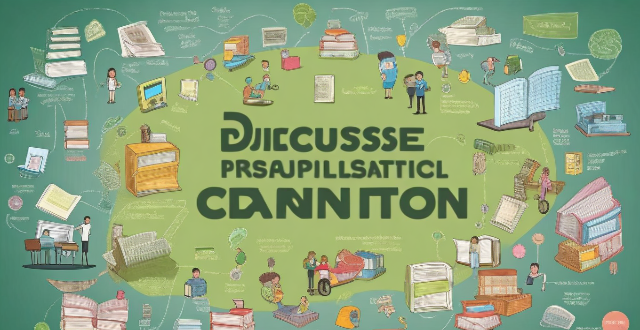
Can remote education platforms replace traditional classroom learning ?
The text discusses the pros and cons of remote education platforms and concludes that they cannot fully replace traditional classroom learning due to lack of social interaction, difficulty with self-motivation, and limited hands-on experience. However, a combination of both methods may provide a well-rounded education.

How can artificial intelligence be integrated into classroom teaching ?
Artificial intelligence (AI) can revolutionize classroom teaching by enhancing student engagement, personalizing learning experiences, and improving educational outcomes. Adaptive learning systems create personalized learning pathways and provide real-time feedback, while intelligent tutoring systems offer individualized coaching and progress tracking. Automated grading and assessment streamline the evaluation process, virtual learning assistants provide round-the-clock support, and data analytics tools inform instructional decisions. AI-powered group projects and peer feedback mechanisms facilitate collaborative learning environments. Integrating AI into classroom teaching has the potential to transform education by creating more engaging, personalized, and efficient learning experiences for all students.

What are some benefits of using online learning resources compared to traditional classroom learning ?
Online learning resources offer advantages over traditional classroom learning, including flexibility and convenience, cost savings, personalized learning experiences, exposure to diverse cultures, and development of technology skills.

What are the legal rights of students with special education needs under the law ?
Students with special education needs have specific legal rights under the law, including the right to a free and appropriate public education, individualized education programs, least restrictive environment, non-discriminatory assessment practices, and procedural safeguards. These rights are designed to ensure that students with special education needs receive an equitable and appropriate education that allows them to reach their full potential.

How can teacher training address cultural diversity in the classroom ?
In today's globalized world, cultural diversity is an increasingly important aspect of modern classrooms. Teacher training can play a crucial role in addressing this diversity by incorporating it into curriculum design, adapting teaching methods, providing professional development opportunities, and implementing fair assessment practices. By doing so, teachers can create inclusive classrooms where all students feel valued and supported, promoting equity and enhancing learning outcomes.
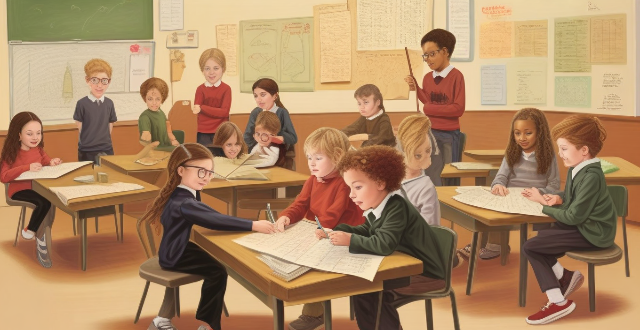
What are some innovative approaches to incorporating physical activity into daily classroom routines ?
Incorporating physical activity into daily classroom routines is essential for student development. Brain breaks, movement stations, active learning games, outdoor experiences, and mindful moments are effective ways to promote physical health, cognitive abilities, social skills, and emotional well-being. Examples include stretching exercises, dance parties, yoga poses, math hoops, word cones, chair yoga, scavenger hunts, Jeopardy! relay races, spelling jump rope, nature walks, field trips, outdoor classrooms, breathing exercises, body scan meditations, and gratitude journaling.
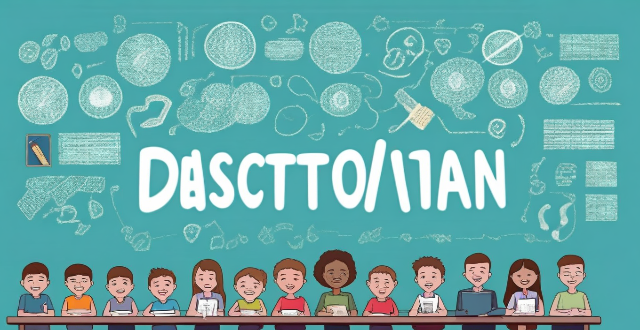
How can parents and teachers work together to address behavioral issues in the classroom ?
This text discusses the importance of collaboration between parents and teachers in addressing behavioral issues in the classroom. It emphasizes the impact of behavior on a student's academic performance, social interactions, and overall well-being, and suggests strategies for effective communication, positive reinforcement, clear expectations, differentiated interventions, and home-school collaboration. The roles and responsibilities of teachers, parents, and students are also outlined, along with challenges and solutions to overcome communication barriers, deal with resistant parties, and address complex behavioral issues. Case studies and examples are provided to illustrate successful interventions and common pitfalls, emphasizing the importance of continuous evaluation and improvement. The conclusion recaps key points and calls for active participation and ongoing support from both parents and teachers to effectively address behavioral issues in the classroom.

What is educational psychology ?
Educational psychology is a subfield of psychology that focuses on the learning process and its influencing factors. It aims to understand students' learning, thinking, and development over time, as well as how teachers can support their educational needs. Key concepts include learning theories, cognitive development, motivation, classroom management, and assessment and evaluation. Applications of educational psychology include curriculum design, special education, counseling and mental health services, teacher professional development, and research. By applying its principles, educators can create effective teaching strategies, foster positive classroom environments, and improve student outcomes.

How do you identify a child who may have special education needs ?
Identifying a child with special education needs is crucial for providing them with the right support and interventions. Signs include delayed developmental milestones, difficulty in school, unusual behaviors or habits, and health concerns. If you suspect a child may have special education needs, consult with professionals to determine the appropriate course of action.

Are there any special cruise packages for honeymooners or couples ?
Cruise lines often offer special packages and deals for honeymooners and couples to make their trip extra special. Here are some of the common offerings: - Romance Packages with amenities such as champagne, private dinners, spa treatments, room upgrades, late dining options, and rose petal turndown service. - Honeymoon Registry where friends and family can contribute to your cruise vacation instead of traditional wedding gifts. - Celebration Benefits for special occasions like anniversaries or engagements, including complimentary cake, wine, or a special card from the crew. - Themed Cruises designed specifically for couples, such as adults-only cruises, wedding and vow renewal cruises, and anniversary celebrations. - Shore Excursions that cater to couples, such as romantic beach getaways, sunset sailing tours, and private guided tours. - Loyalty Programs that offer discounts, exclusive events, or other benefits for returning guests. When booking, always ask about these packages and promotions, as availability and inclusions can vary by cruise line and specific sailing.

What are the most romantic high-class restaurants for a special occasion in Rome ?
Rome, known as the city of love, boasts a variety of high-class restaurants perfect for special occasions. Among them are Aroma with its elegant ambiance and seasonal dishes; Il Conventino, offering historic charm and vegan options; La Pergola, renowned for its Michelin stars and innovative cuisine; Ristorante La Terrazza dell'Eden, providing chic ambiance and internationally influenced Italian fare; and Imàgo, known for its modern style and seafood specialties. Each restaurant offers a unique experience to make your special occasion unforgettable.

What are some successful methods for teaching reading to children with special education needs ?
Successful methods for teaching reading to children with special education needs include multisensory instruction, individualized instruction, structured literacy approaches, differentiated instruction, technology-enhanced learning, collaboration with parents and caregivers, and inclusive classroom practices. These strategies aim to provide tailored, engaging, and supportive environments that cater to the unique needs of each child, promoting their reading development and overall educational success.

How can technology be used to enhance learning for students with special education needs ?
Technology can significantly enhance learning for students with special education needs by offering personalized experiences, accessibility features, collaboration tools, data-driven insights, and safety/mental health support.
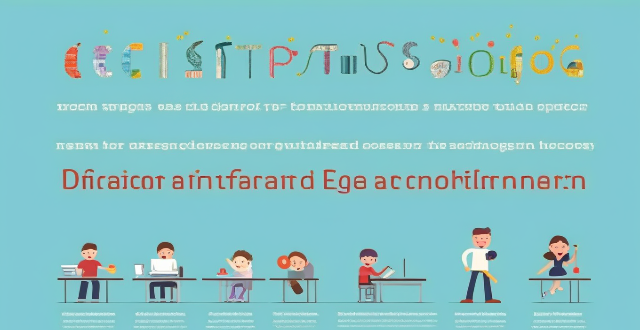
What is the role of educational psychology in special education ?
The text discusses the significant role that educational psychology plays in special education. It highlights various areas where insights from educational psychology contribute to understanding and supporting students with disabilities or special needs, including identification and assessment, instructional planning, behavior management, learning supports, transition planning, and family involvement. The summary underscores that by applying principles of educational psychology, educators can design more effective strategies, foster inclusive environments, and promote the overall well-being and academic success of all students.

How can educational psychology help in classroom management ?
Educational psychology helps in classroom management by providing insights into student behavior, motivation, learning styles, and emotional needs. By understanding these factors, teachers can create effective strategies for managing challenging behaviors, promoting student motivation, tailoring teaching styles to different learning styles, enhancing student-teacher relationships, and addressing emotional needs. This leads to a positive and effective learning environment for all students.

How can schools best support students with special education needs ?
Schools can best support students with special education needs by implementing individualized education programs, fostering inclusive classrooms, encouraging collaborative teamwork, providing differentiated instruction, offering accessible learning materials, and adopting positive behavioral interventions and supports.
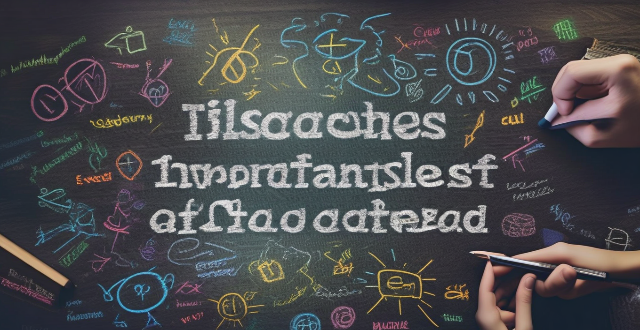
What is the best approach for training teachers in special education needs ?
This text discusses the importance of training teachers in special education needs (SEN) to ensure all students receive an appropriate education. It suggests a comprehensive approach that includes understanding the importance of SEN, foundational knowledge and skills, practical application, emotional and behavioral support, communication and partnership, and continuous professional development. The text emphasizes the need for ongoing training, reflective practice, and collaboration with professionals from related fields to provide holistic support for students with SEN.

How can parents and teachers work together to support students with special needs ?
Supporting students with special needs is a collaborative effort between parents and teachers. Here are some ways they can work together: 1. **Establish Open Communication** through regular meetings, clear communication, and active listening. 2. **Develop a Shared Vision** with common goals, individualized plans, and flexibility. 3. **Provide Consistent Support** by maintaining consistent routines, using collaborative teaching strategies, and assisting with homework. 4. **Encourage Inclusivity** in classrooms, peer mentoring programs, and accessibility. 5. **Share Resources and Best Practices** through professional development, parent workshops, and networking. 6. **Monitor Progress and Adjust Strategies** by collecting data, creating a feedback loop, and being adaptable.
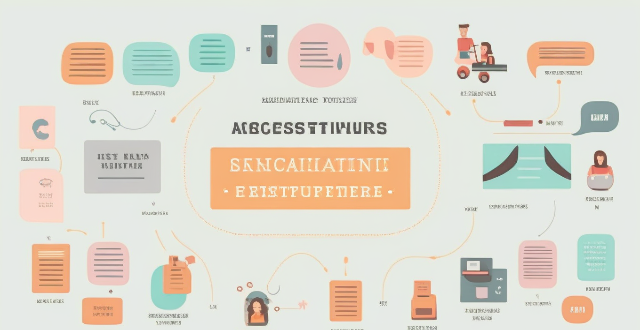
How do remote education platforms cater to students with special needs ?
Remote education platforms offer a range of accessibility features, personalization options, and support services to cater to the needs of students with special needs. These include text-to-speech and speech-to-text features, closed captions and transcripts, alternative formats for course materials, customizable settings, flexible scheduling, adaptive learning technologies, tutoring and mentoring services, accommodations and modifications, and counseling and mental health support. By providing these resources, remote education platforms can help ensure that all students have equal opportunities to succeed in their courses.
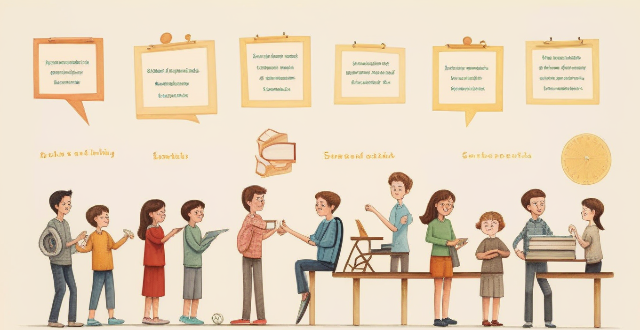
What training should regular education teachers have to effectively teach students with special education needs ?
Regular education teachers require specialized training to teach students with special education needs (SEN). This should include understanding of SEN, differentiated instruction, collaboration and communication, data collection and analysis, and cultural competency. By equipping teachers with these skills, we can create a more inclusive learning environment for all students.

What types of assistive technology are available for students with special education needs ?
Assistive technology for students with special education needs includes devices and systems to enhance their functional capabilities. Types of AT include alternative communication tools, computer accessibility features, mobility aids, sensory aids, learning aids, environmental controls, orthotic/prosthetic devices, and personal emergency response systems. Selecting the right AT requires evaluation of student needs and collaboration between the student, family, teachers, and service providers to ensure it is user-friendly, effective, and integrated into the educational program.

What is an Individualized Education Program (IEP) and how does it benefit students with special needs ?
The Individualized Education Program (IEP) is a legal document that outlines the educational needs of a student with special needs and provides a plan for how those needs will be met. It ensures that students with disabilities receive a free and appropriate public education tailored to their unique learning requirements. The benefits of an IEP include personalized learning plans, collaborative decision-making processes involving parents, measurable goals, accountability and documentation, and transition planning for older students. Overall, the IEP helps ensure that each student's unique learning profile is considered and addressed through a collaborative effort between educators and parents, resulting in a more effective educational experience that prepares students for success both academically and in their future endeavors.

What is the connection between educational psychology and cultural diversity in the classroom ?
The text discusses the importance of integrating educational psychology and cultural diversity in classroom settings to enhance learning experiences, social skills, and academic achievement. It highlights the benefits of cultural diversity in education, including enhanced learning experiences, improved social skills, and increased academic success. The role of educational psychology is also emphasized, as it provides insights into how cultural diversity affects student learning and development. Key concepts related to cultural diversity in educational psychology include cognitive development, motivation, social interaction, and assessment. Strategies for integrating cultural diversity into educational psychology practices are also discussed, such as culturally responsive teaching, inclusive curriculum design, collaborative learning, and professional development opportunities. Overall, the text underscores the significance of addressing cultural diversity in the classroom through educational psychology principles and practices.
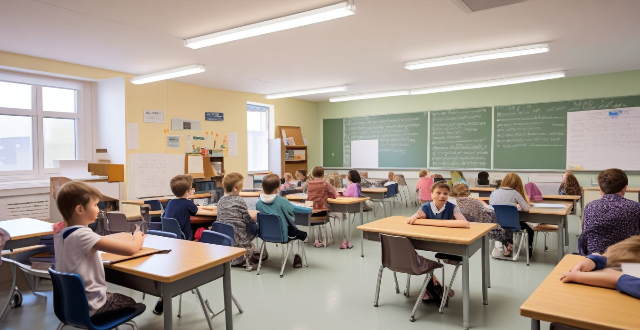
Can social distancing be implemented in schools and universities effectively ?
Social distancing is crucial to prevent the spread of infectious diseases, but implementing it in educational institutions like schools and universities can be challenging. Challenges include limited classroom space, managing student interaction outside of the classroom, and ensuring staff training and compliance. Effective strategies for implementing social distancing in these environments include classroom redesign, virtual learning options, signage and reminders, and monitoring and enforcement. By prioritizing health and safety, educational institutions can contribute to controlling the spread of infectious diseases while continuing to provide quality education.

What are the most common special education needs ?
Special education needs refer to the additional support and resources required by students with disabilities or learning difficulties. These needs can vary widely depending on the individual student's condition, but there are some common types of special education needs that are frequently encountered in schools and educational settings. Some examples include learning disabilities such as dyslexia and dyscalculia, emotional and behavioral disorders such as anxiety and ADHD, autism spectrum disorders, cognitive disabilities such as intellectual disability and traumatic brain injury, and physical disabilities that affect mobility or physical functioning. It is essential for educators and parents to work together to identify these needs early on and provide appropriate support and resources to help students achieve their full potential.